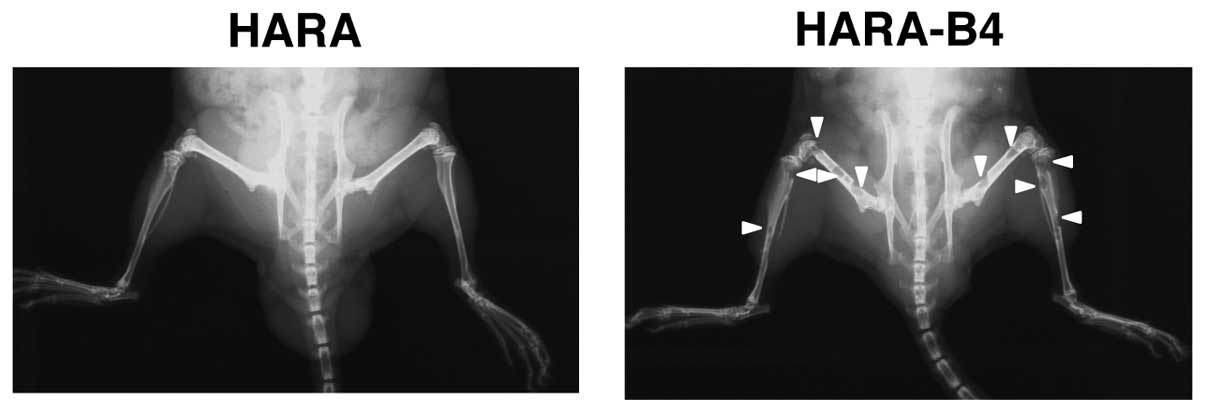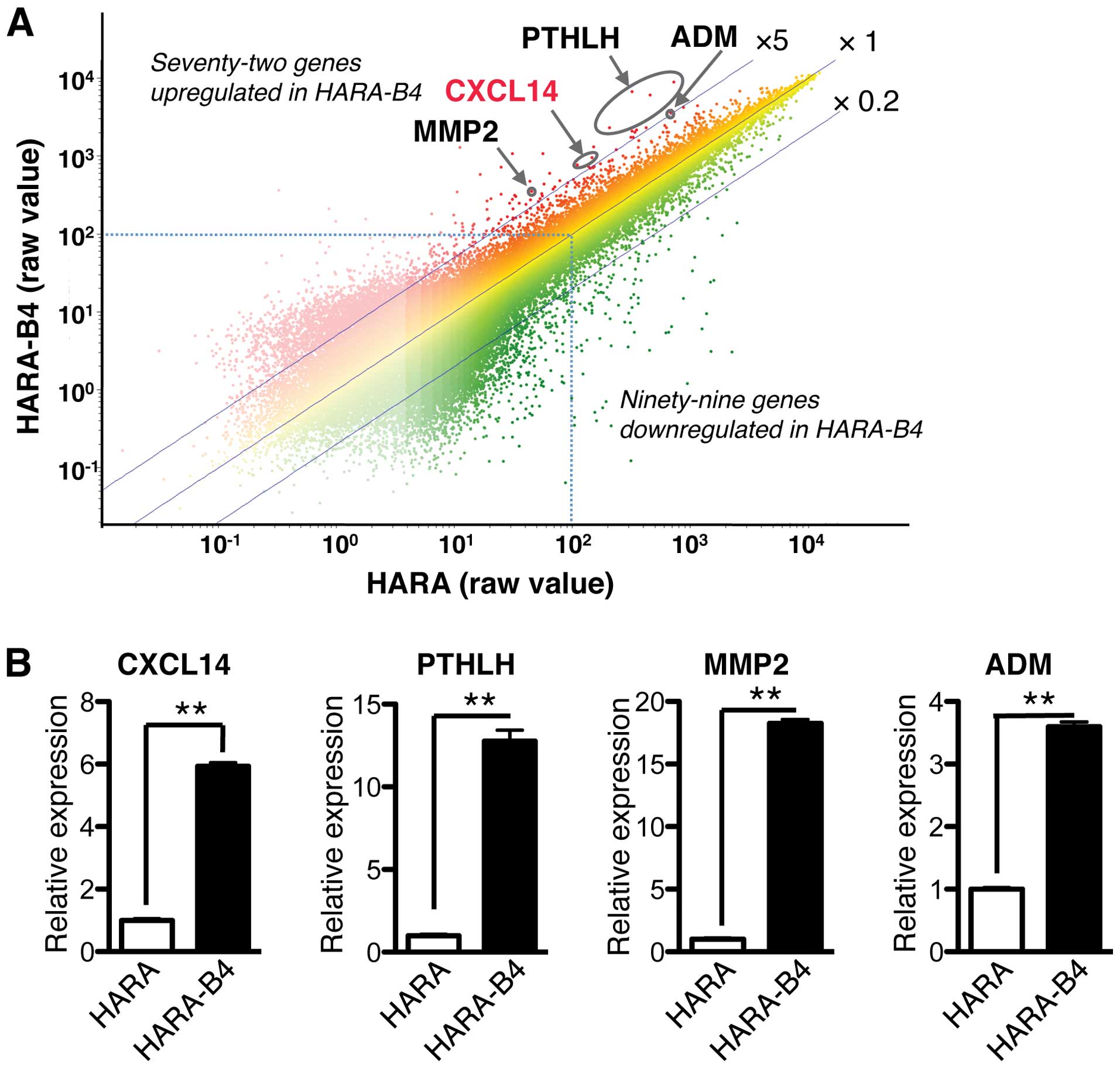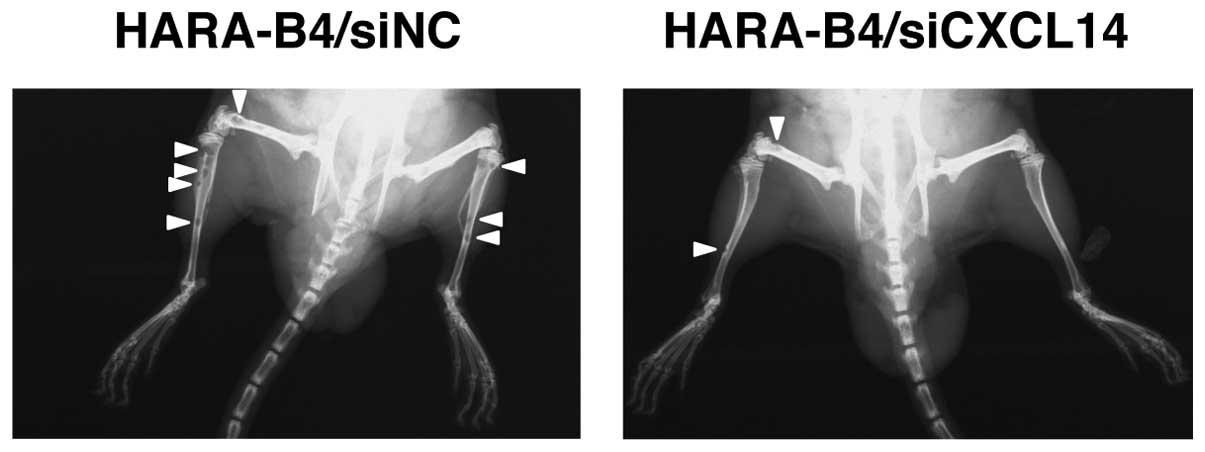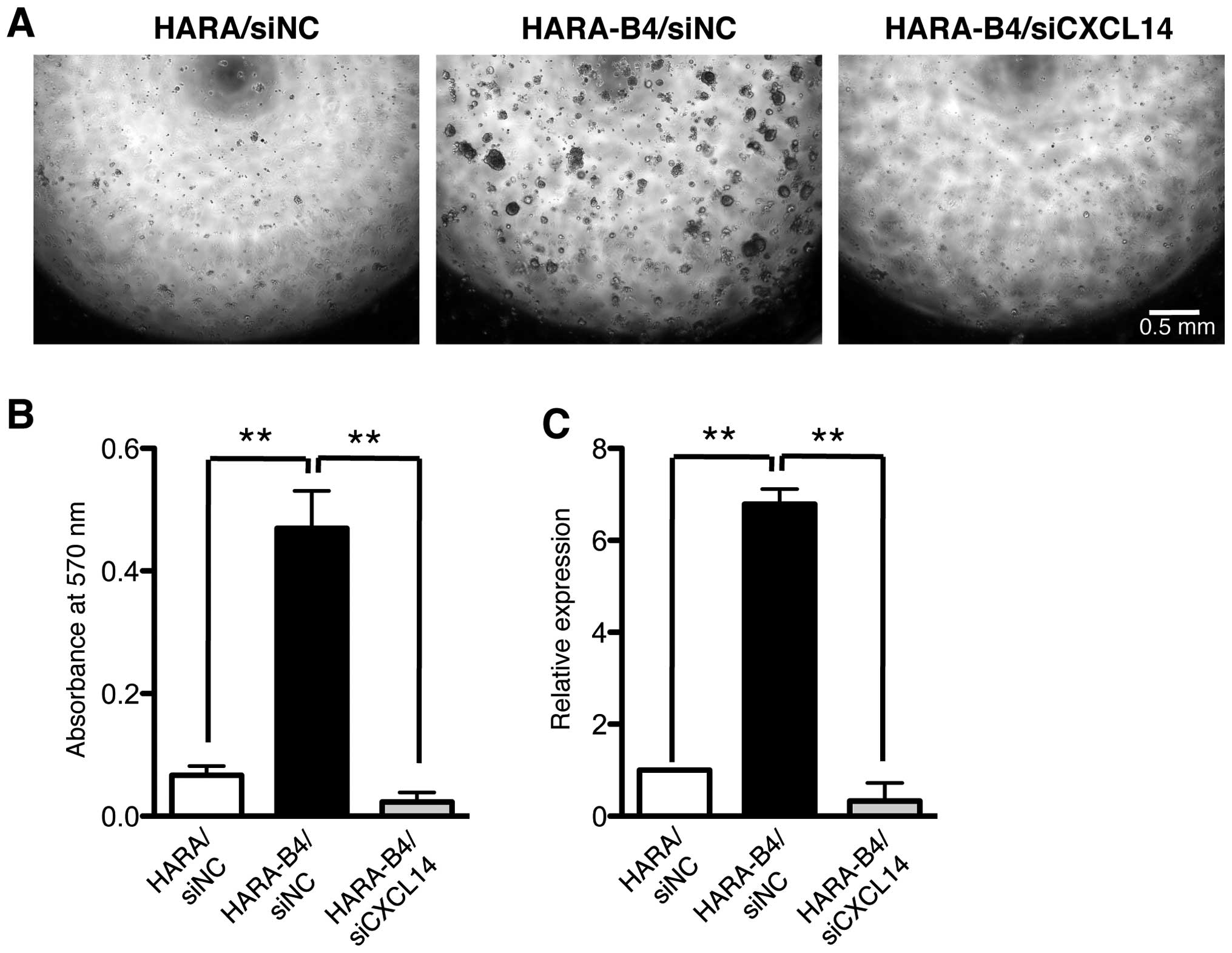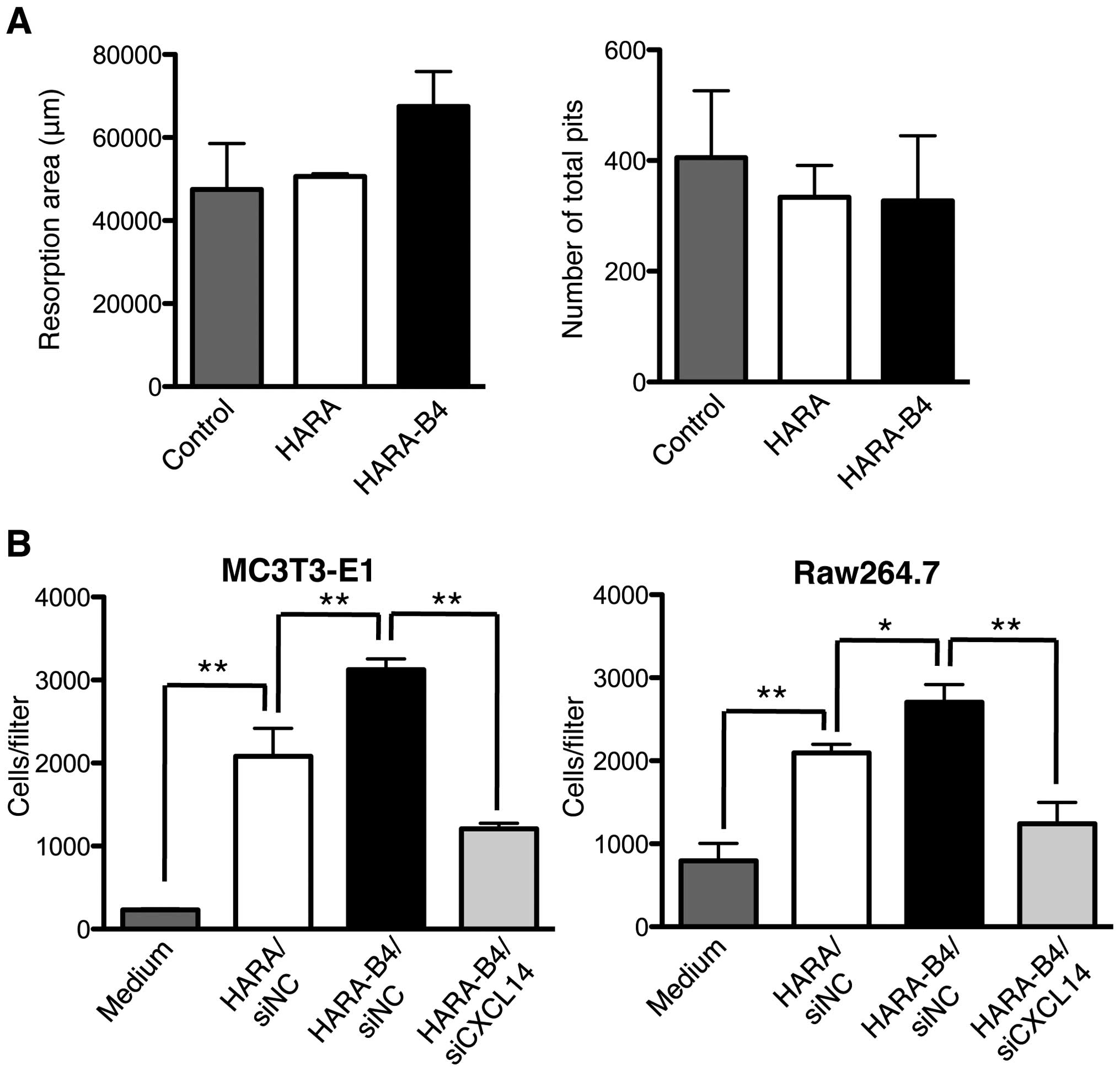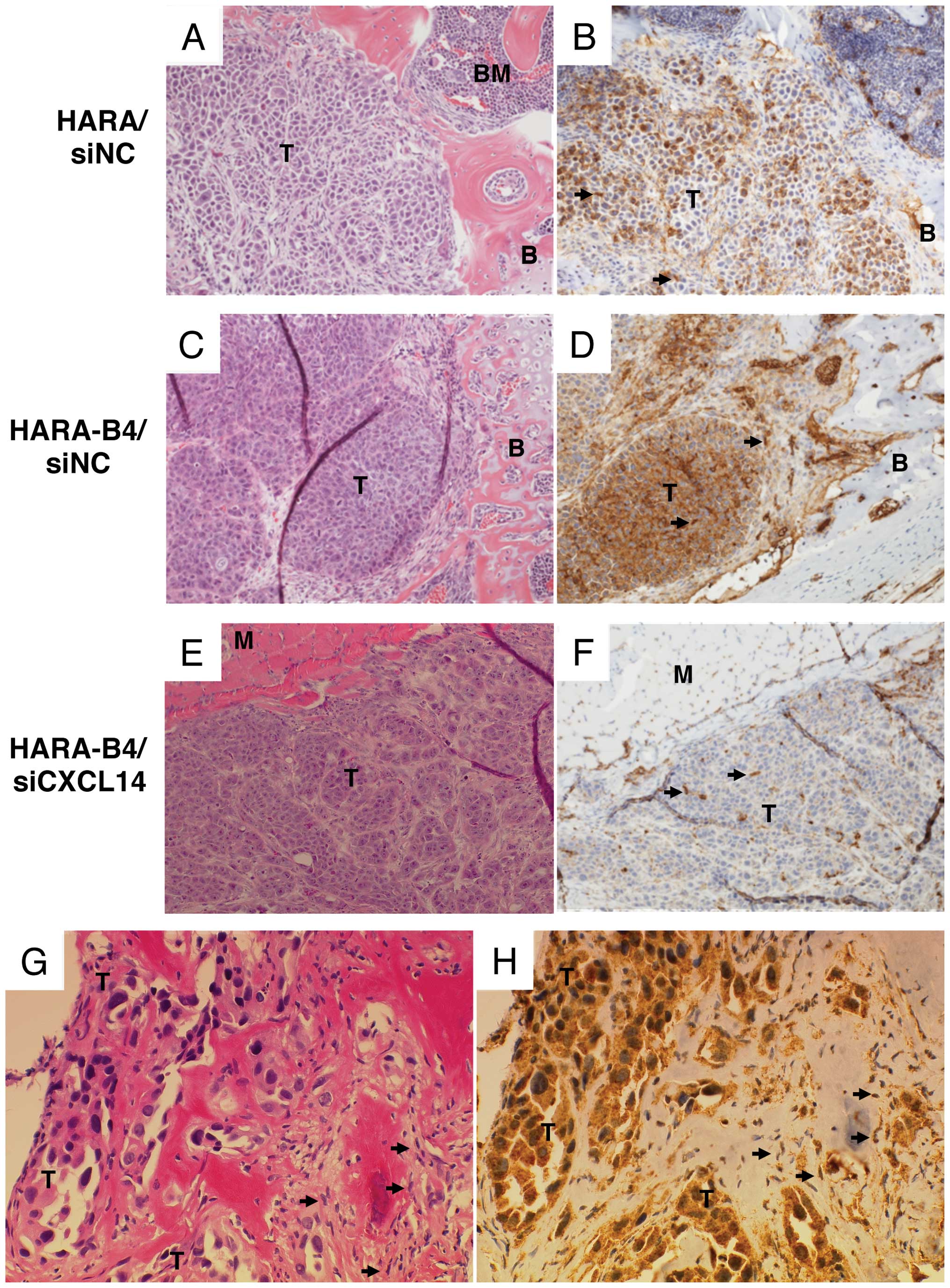|
1.
|
Mundy GR: Metastasis to bone: causes,
consequences and therapeutic opportunities. Nat Rev Cancer.
2:584–593. 2002. View
Article : Google Scholar : PubMed/NCBI
|
|
2.
|
Chambers AF, Groom AC and MacDonald IC:
Dissemination and growth of cancer cells in metastatic sites. Nat
Rev Cancer. 2:563–572. 2002. View
Article : Google Scholar : PubMed/NCBI
|
|
3.
|
Roodman GD: Mechanisms of bone metastasis.
N Engl J Med. 350:1655–1664. 2004. View Article : Google Scholar : PubMed/NCBI
|
|
4.
|
Weilbaecher KN, Guise TA and McCauley LK:
Cancer to bone: a fatal attraction. Nat Rev Cancer. 11:411–425.
2011. View
Article : Google Scholar
|
|
5.
|
Ell B and Kang Y: SnapShot: bone
metastasis. Cell. 151:690. e12012. View Article : Google Scholar : PubMed/NCBI
|
|
6.
|
Iguchi H, Tanaka S, Ozawa Y, et al: An
experimental model of bone metastasis by human lung cancer cells:
the role of parathyroid hormone-related protein in bone metastasis.
Cancer Res. 56:4040–4043. 1996.PubMed/NCBI
|
|
7.
|
Guise TA, Yin JJ, Taylor SD, et al:
Evidence for a causal role of parathyroid hormone-related protein
in the pathogenesis of human breast cancer-mediated osteolysis. J
Clin Invest. 98:1544–1549. 1996. View Article : Google Scholar : PubMed/NCBI
|
|
8.
|
Lynch CC: Matrix metalloproteinases as
master regulators of the vicious cycle of bone metastasis. Bone.
48:44–53. 2011. View Article : Google Scholar : PubMed/NCBI
|
|
9.
|
Ara T and Declerck YA: Interleukin-6 in
bone metastasis and cancer progression. Eur J Cancer. 46:1223–1231.
2010. View Article : Google Scholar : PubMed/NCBI
|
|
10.
|
Croucher PI, Shipman CM, Lippitt J, et al:
Osteoprotegerin inhibits the development of osteolytic bone disease
in multiple myeloma. Blood. 98:3534–3540. 2001. View Article : Google Scholar : PubMed/NCBI
|
|
11.
|
Abe M, Hiura K, Wilde J, et al: Role for
macrophage inflammatory protein (MIP)-1alpha and MIP-1beta in the
development of osteolytic lesions in multiple myeloma. Blood.
100:2195–2202. 2002.PubMed/NCBI
|
|
12.
|
Bendre MS, Gaddy-Kurten D, Mon-Foote T,
Akel NS, Skinner RA, Nicholas RW and Suva LJ: Expression of
interleukin 8 and not parathyroid hormone-related protein by human
breast cancer cells correlates with bone metastasis in vivo. Cancer
Res. 62:5571–5579. 2002.PubMed/NCBI
|
|
13.
|
Bendre MS, Margulies AG, Walser B, et al:
Tumor-derived interleukin-8 stimulates osteolysis independent of
the receptor activator of nuclear factor-kappaB ligand pathway.
Cancer Res. 65:11001–11009. 2005. View Article : Google Scholar
|
|
14.
|
Mancino AT, Klimberg VS, Yamamoto M,
Manolagas SC and Abe E: Breast cancer increases osteoclastogenesis
by secreting M-CSF and upregulating RANKL in stromal cells. J Surg
Res. 100:18–24. 2001. View Article : Google Scholar : PubMed/NCBI
|
|
15.
|
Park BK, Zhang H, Zeng Q, et al: NF-kappaB
in breast cancer cells promotes osteolytic bone metastasis by
inducing osteoclastogenesis via GM-CSF. Nat Med. 13:62–69. 2007.
View Article : Google Scholar : PubMed/NCBI
|
|
16.
|
Coleman R, Cook R, Hirsh V, Major P and
Lipton A: Zoledronic acid use in cancer patients: more than just
supportive care? Cancer. 117:11–23. 2011. View Article : Google Scholar : PubMed/NCBI
|
|
17.
|
Lacey DL, Boyle WJ, Simonet WS, et al:
Bench to bedside: elucidation of the OPG-RANK-RANKL pathway and the
development of denosumab. Nat Rev Drug Discov. 11:401–419. 2012.
View Article : Google Scholar : PubMed/NCBI
|
|
18.
|
Kukita A, Kukita T, Shin JH and Kohashi O:
Induction of mononuclear precursor cells with osteoclastic
phenotypes in a rat bone marrow culture system depleted of stromal
cells. Biochem Biophys Res Commun. 196:1383–1389. 1993. View Article : Google Scholar : PubMed/NCBI
|
|
19.
|
Kukita A, Kukita T, Hata K, Kurisu K and
Kohashi O: Heat-treated osteoblastic cell (ROS17/2.8)-conditioned
medium induces the formation of osteoclast-like cells. Bone Miner.
23:113–127. 1993. View Article : Google Scholar : PubMed/NCBI
|
|
20.
|
Inoue D and Matsumoto T: Parathyroid
hormone-related peptide and bone: pathological and physiological
aspects. Biomed Pharmacother. 54(Suppl 1): S32–S41. 2000.
View Article : Google Scholar : PubMed/NCBI
|
|
21.
|
Nikitenko LL, Fox SB, Kehoe S, Rees MC and
Bicknell R: Adrenomedullin and tumour angiogenesis. Br J Cancer.
94:1–7. 2006. View Article : Google Scholar
|
|
22.
|
Hromas R, Broxmeyer HE, Kim C, Nakshatri
H, Christopherson K II, Azam M and Hou YH: Cloning of BRAK, a novel
divergent CXC chemokine preferentially expressed in normal versus
malignant cells. Biochem Biophys Res Commun. 255:703–706. 1999.
View Article : Google Scholar : PubMed/NCBI
|
|
23.
|
Cao X, Zhang W, Wan T, et al: Molecular
cloning and characterization of a novel CXC chemokine macrophage
inflammatory protein-2 gamma chemoattractant for human neutrophils
and dendritic cells. J Immunol. 165:2588–2595. 2000. View Article : Google Scholar
|
|
24.
|
Allinen M, Beroukhim R, Cai L, et al:
Molecular characterization of the tumor microenvironment in breast
cancer. Cancer Cell. 6:17–32. 2004. View Article : Google Scholar : PubMed/NCBI
|
|
25.
|
Shellenberger TD, Wang M, Gujrati M, et
al: BRAK/CXCL14 is a potent inhibitor of angiogenesis and a
chemotactic factor for immature dendritic cells. Cancer Res.
64:8262–8270. 2004. View Article : Google Scholar : PubMed/NCBI
|
|
26.
|
Augsten M, Hagglof C, Olsson E, et al:
CXCL14 is an autocrine growth factor for fibroblasts and acts as a
multi-modal stimulator of prostate tumor growth. Proc Natl Acad Sci
USA. 106:3414–3419. 2009. View Article : Google Scholar : PubMed/NCBI
|
|
27.
|
Pelicano H, Lu W, Zhou Y, Zhang W, Chen Z,
Hu Y and Huang P: Mitochondrial dysfunction and reactive oxygen
species imbalance promote breast cancer cell motility through a
CXCL14-mediated mechanism. Cancer Res. 69:2375–2383. 2009.
View Article : Google Scholar : PubMed/NCBI
|
|
28.
|
Muller A, Homey B, Soto H, et al:
Involvement of chemokine receptors in breast cancer metastasis.
Nature. 410:50–56. 2001. View
Article : Google Scholar : PubMed/NCBI
|
|
29.
|
Taichman RS, Cooper C, Keller ET, Pienta
KJ, Taichman NS and McCauley LK: Use of the stromal cell-derived
factor-1/CXCR4 pathway in prostate cancer metastasis to bone.
Cancer Res. 62:1832–1837. 2002.PubMed/NCBI
|
|
30.
|
Li X, Loberg R, Liao J, Ying C, Snyder LA,
Pienta KJ and McCauley LK: A destructive cascade mediated by CCL2
facilitates prostate cancer growth in bone. Cancer Res.
69:1685–1692. 2009. View Article : Google Scholar : PubMed/NCBI
|
|
31.
|
Chiarugi P and Giannoni E: Anoikis: a
necessary death program for anchorage-dependent cells. Biochem
Pharmacol. 76:1352–1364. 2008. View Article : Google Scholar : PubMed/NCBI
|
|
32.
|
Taddei ML, Giannoni E, Fiaschi T and
Chiarugi P: Anoikis: an emerging hallmark in health and diseases. J
Pathol. 226:380–393. 2012. View Article : Google Scholar : PubMed/NCBI
|



